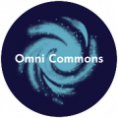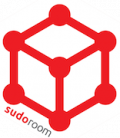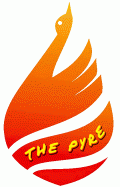|
|
Among technologists, for whom information and communication flow at hyper-speed and social bonds are increasingly interest-based, developing relationships with people and communities outside of your comfort zone of easy compatibility can feel frustratingly slow. The world of software development does not typically attend to the kind of bottom-up, community-based research process I’m accustomed to as an anthropologist – rather, rapid iteration is prized over emergent design and humans (who have a tendency to wield tools in unexpected and surprising ways) are reconfigured as ‘users’ of software that provides a ‘service.’ What follows is an attempt to articulate the process of doing anthropological research for developing technological tools, in the hopes of inspiring technologists to rethink the process of software development in a more human, culturally accountable manner.
Ethnographic research is the art and science of becoming attuned to the cadence of a culture. Largely, this entails the anthropologist’s direct engagement in a cultural milieu, the everyday observations of which are recorded as field notes. Field notes based on the anthropologist’s observations are accompanied by semi-structured interviews (typically recorded, transcribed, and coded) and occasionally surveys to incorporate the variety of roles, activities and perspectives that make up the cultural phenomena under study. An ethnography tells the story of a cultural group – incorporating field notes, interviews, historical research and critical analysis – and is the product of field research that relies on participant-observation as the principal methodological approach. Recent developments in the field of anthropology explore and experiment with new techniques for writing the ‘other’ that often entail treating the self as an other, first and foremost. Reflexivity is crucial for engaging in critical thinking about one’s own role and bias in cultivating cross-cultural understanding.
Multiple methods of analysis are employed in order to understand the complex dynamics of building technological tools for communities from the ground up. Semi-structured interviews are a primary source of the data and information gathered in the process of building tools responsive to community needs. Personal interviews allow community members to voice their opinions and share their biographies in a safe space of confidentiality and empathic listening, while group interviews encourage collaborative storytelling about the community’s origins and history, present issues and projects, and reveal collective visions and goals (as well as anxieties and fears). Focused discussions with community members are also a primary planning and implementation space, including sit-down brainstorming sessions aimed at raising issues and needs that could be addressed by the project.
Of further relevance is what’s known as Community-Based Participatory Action Research. Community-based participatory action research is a methodology that reorients authority horizontally. That is to say, the final product of community-based research is designed to facilitate alliances between local organizations that have vested interests in the community under study, rather than research designed to fulfill an institutional, governmental or corporate agenda. As such, community-based research tends to blend academic and activist agendas, ultimately producing something of value to the research “subjects” that is at once collaborative and politicized.
Always a fan of mixed methods, I’ve been working with the Open Oakland Digital Divide group to reach out to organizations that are already addressing access to technology in Oakland. Rather than reinventing the wheel, we thought it prudent to endeavor toward creating a hub of existing efforts by researching and documenting them on OaklandWiki. Providing such a service ideally demonstrates to the groups we’re reaching out to that we respect and appreciate the work they’ve been doing, enabling us to more effectively request their time for visiting and asking questions about what they need that we could potentially provide. It furthermore creates an opportunity for us to serve as bridges, building a coalition of those committed to addressing the digital divide by making them visible to each other.
The purpose of this post was not in any way intended to condemn the culture of open source communities. The collaborative research process of the Digital Divide group embodies the DIWO (Do It With Others) ethos that I so dearly adore about hacker culture – though it’s doubtful that many members of the group self-identify as hackers. Tidepools, the open source neighborhood mapping project I’ve been working on, was developed under the direct input of the Red Hook community through a unique hybridization of technological development rooted in ethnographic process. I’ve become ever more passionate about the intersections between cultures, the power and potential of fusing worlds. That excitement and fervor has found me racing between spaces, places, communities and meetings – constantly in action, constantly iterating an idea into refinement without allowing it to grow. Borrowing from the best of both open source culture and anthropology, I’m committing this blog to being a living testimony to transparent documentation, reflexivity and critical thinking – but for that to happen, I have to learn to slow down and allow thought to crystallize into language. Here’s to slow dev! 😉
6:00-6:10pm, aim:
b: do you work “with” a medium or “in” one?
r: depends on your definition of medium…
r: language is a medium through which we speak
r: think
r: with which we write?
r: in which we think!
r: with which we write!
b: we use to write
r: but what is writing if not the use of language?
b: exactly
r: i agree
r: but then you are saying
r: we use the use of language
r: doesnt make sense
b: medium doesn’t mean use
b: also
b: I don’t think “language” is a medium
b: “writing” is a medium
b: it’s backwards
j: writing is the use of a medium
j: which is language
b: no
b: painting is a medium, sculpture is a medium, writing is a medium
j: so it goes back to the definition of a medium
j: you’re speaking from the perspective of the arts
j: i’m coming from an anthropological perspective
j: in which language is the primary medium through which communication occurs
j: you’re talking about mediums as conduits of creation, i think?
j: or expressive practices
b: yes!
 Narcissus captivated by his own reflection in the pond. Narcissus, a Greek god, spurned the advances of the goddess Echo (or so one version of the story goes). As she faded away in a lonely spot, her final whispery prayers for vengeance were overheard by the goddess Nemesis. As punishment, Narcissus was doomed to fall in love with his own reflection. Pining for his own image in a pool of water, he died and changed into the flower that would come to be called narcissus.
I recently realized that I have all but completely shifted my writing online, into the public domain. Why bother to hold onto those random musings and discoveries when you can tweet them, and not care who’s listening?
I feel something like a civic responsibility. Or perhaps it could be captioned: “Subversivity and Adversity: Fuck!Shit! Oh Woe Is Me.” It is conversation that is key, dialogues that enable challenges to the American ideology of individualism that has long blinded us to the power of empathy, listening, and cultural sensitivity:
Raul Castro, the President of Cuba, recently met with US lawmakers and called for direct negotiations. The meeting revealed to the Americans an earnest desire for dialogue:
”There is no need to emphasize what Cuba has always said: We do not fear dialogue with the United States,” he wrote. ”Nor do we need confrontation to exist, as some foolish people think. We exist precisely because we believe in our ideas and we have never feared dialogue with the adversary.”
Also this past week, a San Francisco Bay Area event for Burners dubbed “Go Native!” was canceled in the face of virulent furor by Native Americans across the country. The East Bay Express reports:
The strange saga all began in early February when Visionary Village — a loose group of artists and other young people who enjoy the annual Burning Man arts festival in Nevada — began routine publicity for a Burning Man-style “private event” at the Bordello on E. 12 Street in Oakland. The online flyer circulated on Tribe.net read: “GO NATIVE” in an Old West font set against a desert sun, and the dance party was advertised as a “fundraiser for the Native American Church.” Native-rights activists got wind of it and publicized additional text from the VisionaryVillage.org web site indicating four “elemental rooms” would be themed: “Water: Island Natives (Maori); Air: Cliff Natives (Anasazi); Earth: Jungle Natives (Shipibo); Fire: Desert Natives (Pueblo).” Ravers were offered a discount off the $20 door fee “if you show up in Native costume,” and the money would fund “neurofeedback research demonstrating causality between medicinal use [of peyote], improved brainwave patterns, and heightened mirror neuron activity in users.” The 140-year-old Bordello property abuts Interstate 880 and an ancient Ohlone Indian site dated to the 12th century B.C., which was also promoted.
The Visionary Village leaders quickly complied with the Native Americans’ demand for cancellation and request for dialogue. It was to be a lesson in effective conflict resolution, though certainly tensions remain: On the night of the event, a handful of Burners were lectured to for four hours on the importance of cultural sensitivity, appropriation, and outright theft. The Burners were apologetic and conciliatory and willing to bridge the rifts between their cultures.
But, still – robbed of one’s culture twice over. Blindly reproducing the hierarchies we’d once imposed in another iteration- one more ignorant, autosexual, narcissistic-
“Power is not caring who’s listening,” a quote from Bernie Hogan that found its way to my Twitter feed (and certainly applies to Twitter)- but it is also caring who’s listening! Not necessarily in the paranoid, conspiratorial sense (though sometimes they really are out to get you), but rather in the empathetic sense. The knife is a technology that can be used to cut food, or used to cut people. Beware of spending too much time in front of the mirror: In search of strokes we become addicts blindly drawn to the glow. There are so many DIFFERENT kinds of people, paradigms, possibilities just beyond the realm of comfort and habit, yet we continue to be drawn to that which confirms and reaffirms what we already know.
The medium is the message: a television show may compress time and space in such a way as to provide a limited, inauthentic experience; conversely, it could play with time and space in a wiggly manner. Perhaps this explains my wholesale absorption by television involving time travel (Heroes and Lost, specifically), or shows that sweep me into laughter to such a hilarious extent that i forget to fret on what’s been done or what’s to come ahead.
To escape the self is at once ecstatic and terrifying. Victor Turner suggests that “liminality is frequently likened to death, to being in the womb, to invisibility, to darkness, to bisexuality, to the wilderness, and to an eclipse of the sun or moon” (1986: 95). Drawn in to the present reality, which always exists between fixed points, we are freed from these imagined divisions between nature and culture, self and other, past and future.
It is in providing outward display for things and pathways as they exist within the horizons of landscape that places enable memories to become inwardly inscribed and possessed: made one with the memorial self. The visibility without becomes part of the invisibility within.
-Edward Casey, Remembering: A Phenomenological Study, 1987
The medium is the message: erasure of the glow, as all journeys exist in the mind alone. There are so many stories to be told, connections to be made, and so many possible paths for the telling, paths as yet unexplored.
Better to be a pansexual than an autosexual, to be weaving whimsical loops within the whole.
“If behind popular fascination with Freudian theory there was a nervous, often guilty preoccupation with the self as sexual, behind increasing interest in computational interpretations of mind is an equally nervous preoccupation with the self as machine.”
— Sherry Turkle
the words just tumbled out of my mouth: “you have no soul, you cold-hearted machine!” i may as well have called him a monster, an abnegation of his very humanity.
-yet it occurred to me, instantly, that i was contradicting the very essence of my research: that machines indeed bely an essence of warmth, a firelight (however virtual)- indeed, a campfire around which I’d been gathering with my friends (both “real-life” and fictive) for years. we humans are merely creatures of habit, adverse to change that outstretches our imaginations.
“Those who are opposed to the use of computers to teach generally believe the computers to be ‘cold’ and ‘inhuman.’ The teacher is considered ‘warm’ and ‘human.’ This view is questionable on both sides.”
— Theodor Nelson
In the spaces between two poles of prevailing ideology- the utopian discourses of society battling the forces of discord and chaostrophe- there is a middle ground, more subtle. Here is the exploration of human potential, animal language, the deep sea mysteries of the mind. Once in awhile, what is discovered uncovers the stories and dreams of a forgotten time and people.
Who are to be the ancient storytellers of tomorrow? What traces will we leave behind?
I once stayed up ’til dawn crying in front of my computer monitor, having spent the night exploring the MySpace profiles of the dead.
My first romantic love occurred online, faceless.
These things float through my mind, reminding me:
Immersion.
Who is to be monster?
Yesterday, I was ‘defriended’ on Facebook by someone who was once a close friend. This isn’t the first time it’s happened – another ex-friend eliminated me from his virtual network last year, but I was but one small proportion of a mass ‘friend-slaying’ – and I’ve most certainly been defriended by a handful of weak ties and acquaintances – but its the first time I’ve really had a previously close connection visually severed as a result of instigating a virtual confrontation. My angry (and rather public) comment was certainly not unwarranted, as this person has long avoided apologizing for deliberately abandoning me when I most needed friendship, but perhaps a little overdue – the only time I had really confronted her about it was nearly nine months ago, after all.
When I realized that she had not just simply deleted my comment, but defriended me in the process, it felt like a punch to the gut that left me in breathless pain for several hours. Now that the smarting pain has subsided, I’ve started thinking that perhaps defriending is actually quite a practical method, and not necessarily just a passive-aggressive move. It’s amazing how much mental space can get taken up obsessing over past injustices, especially once regular face-to-face contact is lost. Certainly this trend becomes particularly prominent post-college. Facebook and related social media can trigger old pathways we’d normally avoid following, delivering a constant stream of “news” and information about those we’d rather be forgetting.
I love the idea of shaking off old grudges and people who evoke negative energy by simply defriending them, but it conflicts with my belief in forgiveness and my sincere desire not to hurt anyone the way my old friend hurt me yesterday. I’d quit the damn book of faces, but I’m pretty deeply invested in it at this point – it’s how I keep in touch with a huge number of friends, stay informed about upcoming parties and events, share my own stories and things I come across on the ‘net that I know a particular person would enjoy, track down a phone number or address when I need it – and, oh yeah, it’s also a major source of my research.
At the very least, I now understand why the ‘friend-slayer’ I mentioned above did what he did. It must be so very refreshing not to be continually reminded of people who make you feel like shit. And now that I’ve written this post, I’ve come to a sense of closure on the matter, myself, and can look forward to totally getting past someone who never deserved as much mental space as I allotted her.
Maybe I’ll turn giving up social media into a little social experiment. I could probably write a book about that experience!
Or maybe I should just choose my friends more wisely…
This post has been much inspired by fellow Facebook researcher and friend, Jeff Ginger, who wrote an insightful post on the issue: Facebook Friends, False Connection, and Social Norms. Thanks for the chat!
over the past few months, the ways in which i interact with the internet have undergone a dramatic shift- one i attribute chiefly to the introduction of twitter and my new blackberry storm, which now looks like this:

Blackberry smash!! and i thought they were supposed to be really hard to break! i had avoided acquiring a fancy mobile device for precisely this reason, as i am exceptionally talented at destruction and chaos. thankfully, the insurance on this baby means i get a brand new storm for just $50 – which pays for itself, considering that I’ve now acquired an additional media card and battery.
no, i don’t know how it happened. i keep it in a holster on my hip, so the only thing i could think of was that i smashed it with my (admittedly rather pointy) elbow…
i had feared becoming a total crackberry addict, but it actually hasn’t been overly demanding. it vibrates when i receive an email, text message, or phone call, and i use it primarily to get directions, do my email on the subway, and to check twitter at various points throughout my day.
Twitter has become my primary source of news and entertainment. i don’t follow many people, but those i do are always interesting. in addition, it enables me to become a citizen journalist in my own right. the other day, i was running a dog along the chelsea piers when that plane landed miraculously and gracefully on the hudson. no, i didn’t see it personally, but it was impossible not to notice when the west side highway fast became populated with flashing lights and sirens. it seemed like every cop car and ambulance in the city had raced to the scene. my fingers itched for my blackberry, which had sadly been busted just the day prior. i raced home to tweet about it. that was actually the first impulse i had.
the smartmobs blog has been posting a lot of stories about twitter lately. this post talks about how twitter kept the city of toronto informed and connected when the power went out on a bitterly cold night, and this one discusses how the UK is starting to use twitter to promote transparency between citizens and their elected representatives.
I downloaded an interesting case study of Twitter last month: Social networks that matter: Twitter under the microscope. The researchers conclude by contradicting the common claim that examining online social networks implies a definite bond between connections. In the case of Twitter, those you follow and those who follow you often don’t sync up. I don’t use Twitter to keep in touch with my friends, I use it for functions that are quite distinct from one another: personal broadcasting and personal preference in the kinds of information i enjoy consuming in bite-size pieces.
My favorite twitterers? Howard Rheingold (who runs the Smart Mobs blog and tweets regularly about his digital journalism class and social media in the classroom) and John Maeda (president of RISD and producer of amazingly profound aphorisms).sign up and follow me! 😉
Orality and visuality converge and merge into the online medium, reaching simultaneously for both the hearth and the cosmos. This hearth is the realm of the domestic, where we feed our desire for the security of our intimate relationships and the capacity to be our “true self.” At the same time, there is the desire for belonging to the cosmos, the sprawling landscape wherein we accumulate status and perform our identities, which are the products of the various cultural and institutional systems within which we are embedded.
What makes the online medium unique, then, is its capacity to bridge the gap between the realm of the hearth and the realm of the cosmos, reversing what has been called “the disintegation of the public sphere.” However, the transparency and permeability of the online medium renders the private sphere susceptible to public visibility. With the popularization of online communication came an inevitable “moral panic,” inciting both a discourse of fear regarding the transgressive nature of virtual intimacy as well as corporate interest in exploiting the Web for its economic potential. Nevertheless, for the most part the intangible dangers of being held accountable to largely invisible audiences are considered secondary to the convenience of instantaneous access to this public “global village” from the comfort of the home
This post inspired by Paul Levinson’s Digital McLuhan and Cosmos and Hearth (Tuam).
A recent post on ReadWriteWeb discusses the general decline of the popularity of print media and the shift toward reading activity conducted primarily online. We are in the midst of transitioning to yet another form of media, and, like television before it, many of the concerns about this shift pertain to whether this medium is good or bad for “society.” I would argue that the imposition of a value structure in understanding the changes this shift has been accompanied by is insufficient.
While newspapers played a significant role in the formation of national consciousness (through an awareness of an increasingly shared readership), television and the music industry brought people together on the basis of shared cultural tastes that helped individuals to define themselves through identifying with specific niche interests. The Internet has helped to extend this process of individualization, and in the process has transformed the degree of agency people have in learning about the wider world, and most importantly, granting them a voice with which they might be part of that world.
The information we “digital natives” now come across on the Internet is increasingly social in nature. As opposed to the more “top-down” distribution of news and entertainment, the social web creates a heightened sense of shared readership by creating a more horizontal structure (think Digg, social networks, the blogosphere, etc . As a result, we are given more agency in assessing the quality of information – leading to a new form of reading that involves scanning, filtering, aggregating and organizing. I would argue that this is not a “dumbing down” at all, but rather a qualitative shift in the way we learn through media. The question then becomes, who is in fact “dumber”- the person who reads the newspaper that lands on her doorstep and accepts it as the truth, or the person who reads bits and pieces from many news sources (including blogs) and is able to piece together a more complex perspective? . As a result, we are given more agency in assessing the quality of information – leading to a new form of reading that involves scanning, filtering, aggregating and organizing. I would argue that this is not a “dumbing down” at all, but rather a qualitative shift in the way we learn through media. The question then becomes, who is in fact “dumber”- the person who reads the newspaper that lands on her doorstep and accepts it as the truth, or the person who reads bits and pieces from many news sources (including blogs) and is able to piece together a more complex perspective?
I think a more pertinent question to ask is the degree to which the Internet is affecting individual or collective identity- the concept of “networked individualism,” introduced by Boase and Wellman, suggests we are expanding our social networks (weak ties in particular) according to our individual interests and communities of membership, thus diversifying the kinds of information available to us. Simultaneously, through the Internet we are potentially approaching the fulfillment of McLuhan’s notion of “the global village,” and in the process forming a new sort of collective identity- the feeling that we are not only a part of, but increasingly connected to the world on a global scale.
Both MySpace and Facebook have become important sites for political campaigning. In 2006, Facebook launched a feature called Election Pulse, enabling members to indicate which candidates they support, learn about and discuss political issues, and gauge how candidates are faring among Facebookers through polls organized by state. MySpace, in turn, recently launched Impact Channel, fulfilling essentially the same functions as its Facebook counterpart but reaching an even greater audience. Furthermore, the Channel is heavily video-oriented, featuring a series of dialogues with the candidates in collaboration with MTV Networks. Visitors to the site are able to submit videos of themselves asking questions of the candidates, promoting a sense of being directly involved in political democracy. Similar collaborative endeavors between network television and online social networks include the YouTube/CNN presidential debate in June of 2007 and the Facebook/ABC presidential debate in January of 2008.
As the 2008 presidential election approaches, candidates have been rushing to capture the elusive yet desirable youth vote. Unsurprisingly, the Democratic party has been considerably more effective with its use of new social media to drive campaigns. In a recent CNN article, a Republican pollster is quoted as saying: “Our party is really behind in learning how to maximize this and use it to our best benefit. We were very proactive in learning how to use talk radio. When it comes to the Internet, especially social networking sites, we’re really behind.” On MySpace, Barack Obama leads the popularity contest with over 240,000 Friends- not counting the thousands of friends who link to alternate Obama profiles created to represent each individual state in the U.S. His profile consists of a regularly-updated blog, YouTube videos of his past speeches, links to further information, photographs, podcasts, and various buttons linking to his other “online habitats” on sites such as YouTube, Facebook, and LinkedIn.
Such practices serve to humanize politicians and breach the disconnect felt by voters, and are particularly oriented toward the purportedly politically apathetic youth generation of the United States today. Members of online social networks, in turn, have begun utilizing the sites to display their support for particular candidates on their profiles (much like bumper stickers), research and discuss political issues, and run local campaigns in the form of Groups. For the record, I support Obama. And Kucinich.
I have been thinking of online social networks as pertinent examples of a generational trend, marked by the increasing appropriation of the media and proliferation of contextualized interpretations by disparate individuals, connected through shared taste fabrics that are founded, by and large, on mass media. The rise of Web 2.0 signifies a shift toward user-generated content in the form of blogs, photo albums, videos, music, niche communities, message board dialogue, playful interaction, computer media, and creative displays of identity (“mashup”).
The locale of the hearth (that which is safe, secure) has shifted, from the family home theater clustered around the television to a dynamic mirror of ourselves as relational wholes, albeit individually fragmented. We have begun to bridge the gap between producers and consumers of media- increasing interactivity allows for a two-way dialogue as opposed to the directional nature of mass media.
However, all is not oral. New media is rather a hybrid of oral and written language- at once casual yet permanent, private yet public, intimate yet mediated. We are creating the media, but must not forgot the role of the media in inculcating our understandings of reality.
|
|








 . As a result, we are given more agency in assessing the quality of information – leading to a new form of reading that involves scanning, filtering, aggregating and organizing. I would argue that this is not a “dumbing down” at all, but rather a qualitative shift in the way we learn through media. The question then becomes, who is in fact “dumber”- the person who reads the newspaper that lands on her doorstep and accepts it as the truth, or the person who reads bits and pieces from many news sources (including blogs) and is able to piece together a more complex perspective?
. As a result, we are given more agency in assessing the quality of information – leading to a new form of reading that involves scanning, filtering, aggregating and organizing. I would argue that this is not a “dumbing down” at all, but rather a qualitative shift in the way we learn through media. The question then becomes, who is in fact “dumber”- the person who reads the newspaper that lands on her doorstep and accepts it as the truth, or the person who reads bits and pieces from many news sources (including blogs) and is able to piece together a more complex perspective?